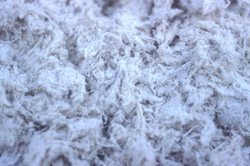Asbestos Fuels Mesothelioma Epidemic in Hong Kong

With a booming Asian economy, Hong Kong used asbestos extensively in the 1950s and 1960s, particularly in the shipyard and construction industries. Asbestos exposure is closely associated with asbestos-related respiratory diseases such as pleural mesothelioma that often appear decades after workers inhale asbestos fibers.
Since 2000, Hong Kong has experienced an epidemic of malignant mesothelioma, a cancer of the lining of the lungs or abdomen, according to a recent article in the journal Environmental Health Perspectives. The epidemic parallels the peak usage of asbestos in the early 1960s since symptoms of asbestos-related disease typically take 30 to 40 years to appear.
Researchers from Australia and China predict that the number of cases of mesothelioma in Hong Kong will peak around 2014, then slowly taper off based on data from the Hong Kong Cancer Registry.
Malignant mesothelioma was rare before the 1950s, but has increased sharply since the 1970s in many parts of the world. Exposure to asbestos in the workplace is considered the highest risk factor for developing asbestos cancer.
The researchers observed a notable increase in incidence of mesothelioma from 1976 to 2006 in Hong kong. The highest incidence was among males 70 years or older.
The increasing incidence of mesothelioma in Hong Kong is similar to trends observed in many countries including France, Germany, Great Britain, the Netherlands, Australia and Japan. The number of cases of mesothelioma in the United States, which restricts asbestos use, has increased to 2,500 to 3,000 a year. The incidence of mesothelioma in many South American countries such as Brazil is expected to keep rising for 10 to 20 more years because of later restrictions on asbestos use.
Hong Kong banned the import and sale of blue asbestos (crocidolite) and brown asbestos (amosite) in 1996. But the country has allowed the continued use of chrysotile asbestos in various industries. While the asbestos industry has claimed that chrysotile asbestos is less toxic than other forms, health organizations have said chrysotile asbestos is a human carcinogen and also causes malignant mesothelioma.
Free Mesothelioma Patient & Treatment Guide
We’d like to offer you our in-depth guide, “A Patient’s Guide to Mesothelioma,” absolutely free of charge.
It contains a wealth of information and resources to help you better understand the condition, choose (and afford) appropriate treatment, and exercise your legal right to compensation.
Download Now